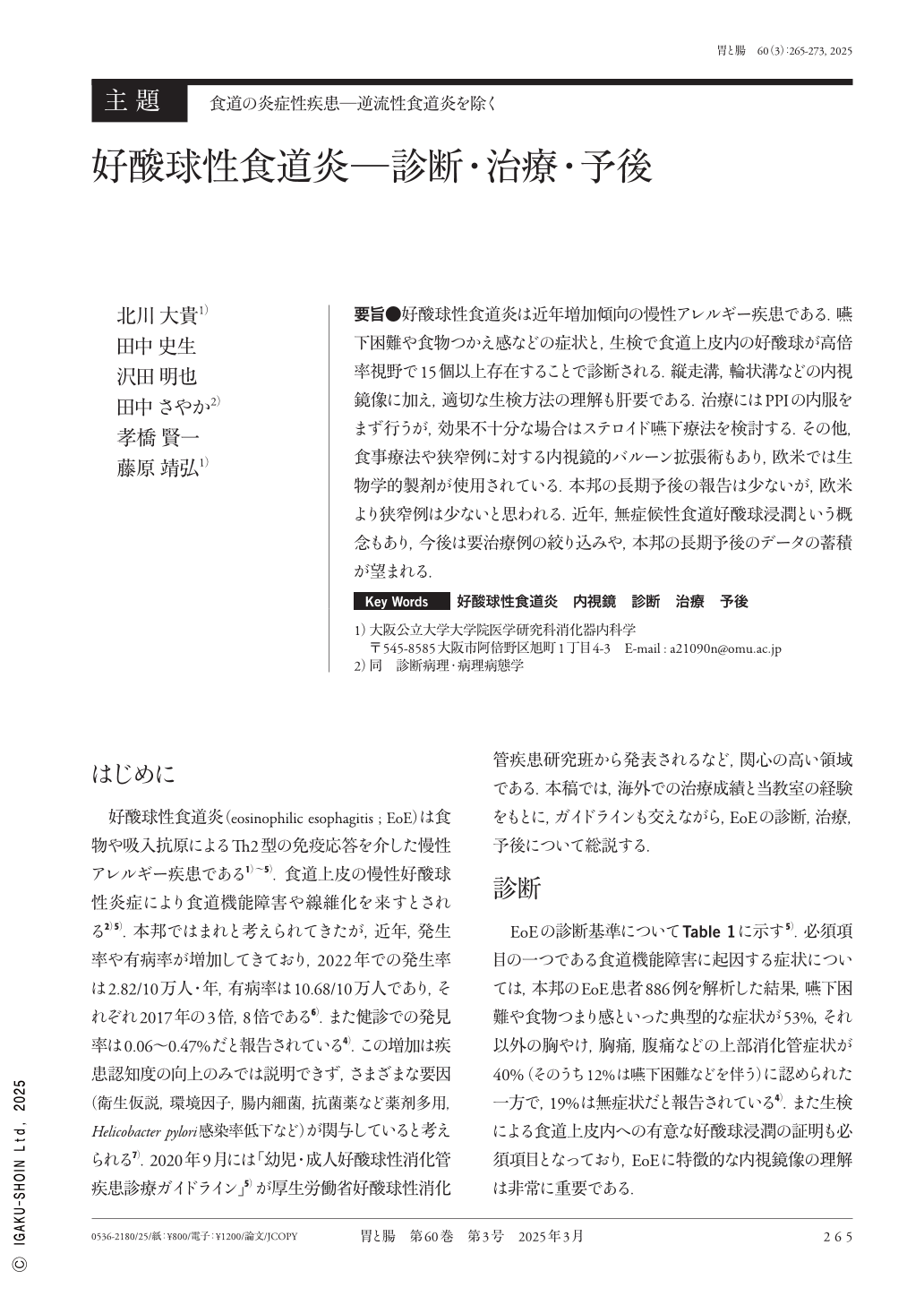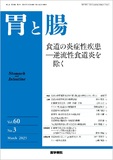Japanese
English
- 有料閲覧
- Abstract 文献概要
- 1ページ目 Look Inside
- 参考文献 Reference
- サイト内被引用 Cited by
要旨●好酸球性食道炎は近年増加傾向の慢性アレルギー疾患である.嚥下困難や食物つかえ感などの症状と,生検で食道上皮内の好酸球が高倍率視野で15個以上存在することで診断される.縦走溝,輪状溝などの内視鏡像に加え,適切な生検方法の理解も肝要である.治療にはPPIの内服をまず行うが,効果不十分な場合はステロイド嚥下療法を検討する.その他,食事療法や狭窄例に対する内視鏡的バルーン拡張術もあり,欧米では生物学的製剤が使用されている.本邦の長期予後の報告は少ないが,欧米より狭窄例は少ないと思われる.近年,無症候性食道好酸球浸潤という概念もあり,今後は要治療例の絞り込みや,本邦の長期予後のデータの蓄積が望まれる.
The incidence of eosinophilic esophagitis(EoE), a chronic immune-mediated disease, has increased in recent years. EoE is diagnosed by the presence of dysphagia and food impaction, as well as an intraepithelial eosinophil infiltration of ≥15 per high-power field. It is important not only to understand the endoscopic findings, such as the longitudinal furrows and mucosal rings, but also to determine the appropriate biopsy method. Patients with EoE are initially treated with oral proton pump inhibitors(PPIs). In cases where PPI therapy does not improve the symptoms, topical steroid therapy is required. Furthermore, a food elimination diet is an important fundamental treatment, and endoscopic balloon dilatation is safe and effective in patients with esophageal stricture. Moreover, biologics are used in Western countries. Although only a few studies have reported the prognosis of EoE patients in Japan, the number of cases with esophageal stricture were considered to be lesser as compared to that in Western countries. Recently, the concept of asymptomatic esophageal eosinophilia has been introduced. Further studies are desirable to stratify the cases requiring treatment and reveal the long-term prognosis in Japan.

Copyright © 2025, Igaku-Shoin Ltd. All rights reserved.


